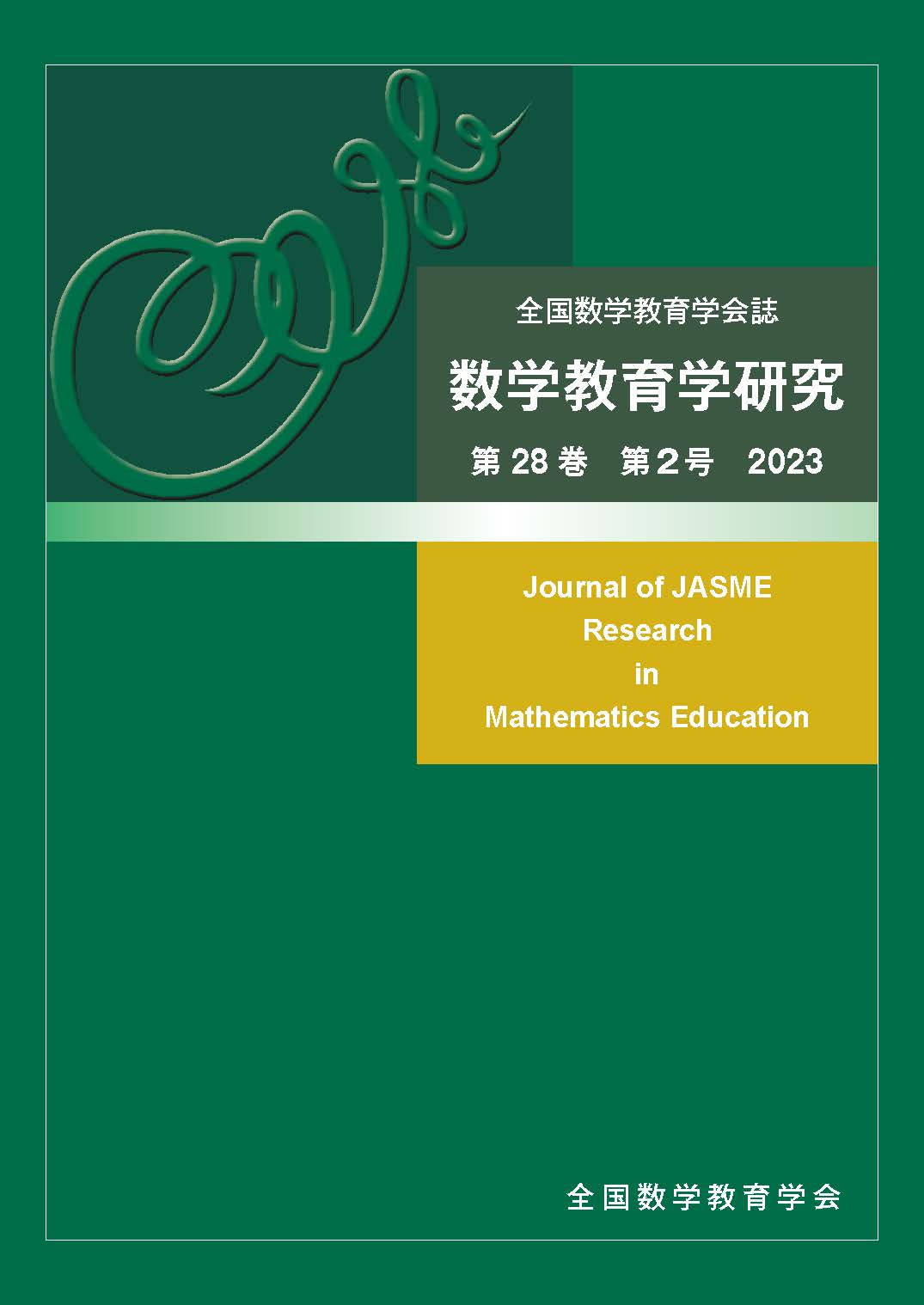Volume 28, Issue 2
Journal of JASME Research in Mathematics Education
Displaying 1-7 of 7 articles from this issue
- |<
- <
- 1
- >
- >|
-
Article type: Articles
2023Volume 28Issue 2 Pages 1-11
Published: March 08, 2023
Released on J-STAGE: October 30, 2024
Download PDF (417K) -
Article type: Articles
2023Volume 28Issue 2 Pages 13-25
Published: March 08, 2023
Released on J-STAGE: October 30, 2024
Download PDF (931K) -
Article type: Articles
2023Volume 28Issue 2 Pages 27-45
Published: March 08, 2023
Released on J-STAGE: October 30, 2024
Download PDF (671K) -
Article type: Articles
2023Volume 28Issue 2 Pages 47-56
Published: March 08, 2023
Released on J-STAGE: October 30, 2024
Download PDF (5835K) -
Article type: Articles
2023Volume 28Issue 2 Pages 57-67
Published: March 08, 2023
Released on J-STAGE: October 30, 2024
Download PDF (1424K) -
Article type: Articles
2023Volume 28Issue 2 Pages 69-76
Published: March 08, 2023
Released on J-STAGE: October 30, 2024
Download PDF (327K) -
Article type: Articles
2023Volume 28Issue 2 Pages 77-97
Published: March 08, 2023
Released on J-STAGE: October 30, 2024
Download PDF (1858K)
- |<
- <
- 1
- >
- >|
